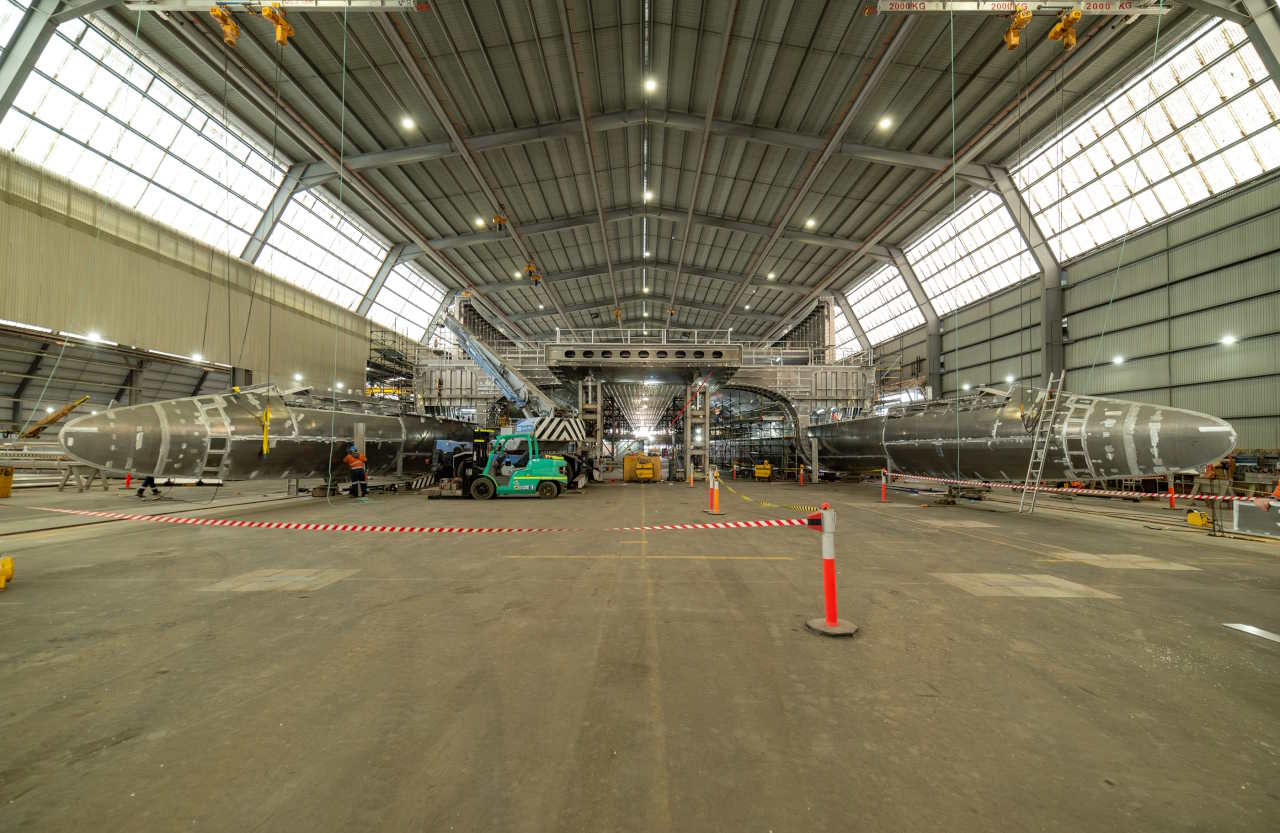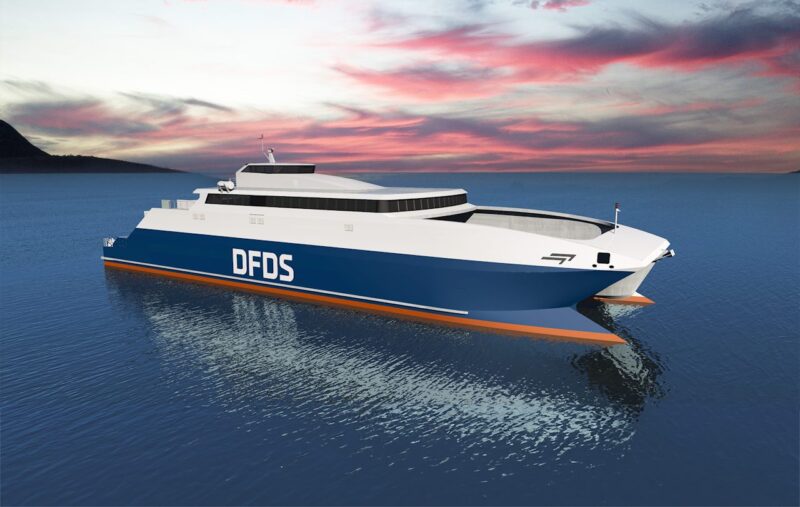Danish shipping and logistics company DFDS has contracted Australian shipbuilder Incat Tasmania to complete a design study for the construction of an electric-hybrid ferry for use across Europe.
Incat Tasmania is already building the world’s largest lightweight battery electric ship for South American ferry operator Buquebus at its Hobart shipyard. .
The 130m battery-electric Ro-Pax (roll-on/roll-off passenger) ferry will be powered by a 40MWh energy system reportedly four-times larger than any battery installation that has been constructed and installed for the marine transport sector.
Last November it launched the design of a potential series-produced electric ferry, and has been asked to conduct a design study for the construction of a 72-metre electric-hybrid ferry suited for ferry routes across Europe.

Image Credit: Incat Tasmania
“Since launching the design of our series produced electric ships last November there has been significant interest from many ferry operators, and we’re excited to work with DFDS on their projects,” said Stephen Casey, Incat Tasmania CEO.
“The Incat 72-metre series is offered in a fully electric model that is suited to many ferry networks around the world.
“We know that battery electric or electric-hybrid propulsion coupled with lightweight aluminium on shorter sea routes will be the ideal choice to cut emissions, and it’s great to see major operators such as DFDS sharing in our goal to shape the future of decarbonisation in maritime transport.”
Because the company is located in Tasmania, 100 per cent of the energy consumed during construction comes from renewable energy sources – mostly hydro but also with wind and solar.
The Tasmanian based shipbuilder made its name in the 1990s with the development of large vehicle carrying catamarans.
“Nw we’re ready to work with ferry operators around the world to showcase what the future of maritime transport looks like,” said Casey.
“Incat has specialised in lightweight aluminum vessel design and construction for the past four decades. Aluminum ferries, being approximately half the weight of their steel counterparts, require less power when operated at similar speeds and deadweights. This results in significant energy savings and emissions reductions.”
Joshua S. Hill is a Melbourne-based journalist who has been writing about climate change, clean technology, and electric vehicles for over 15 years. He has been reporting on electric vehicles and clean technologies for Renew Economy and The Driven since 2012. His preferred mode of transport is his feet.


